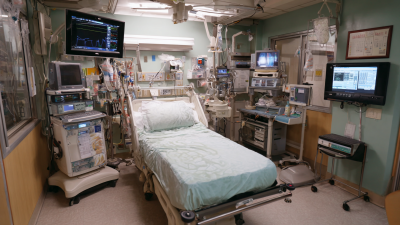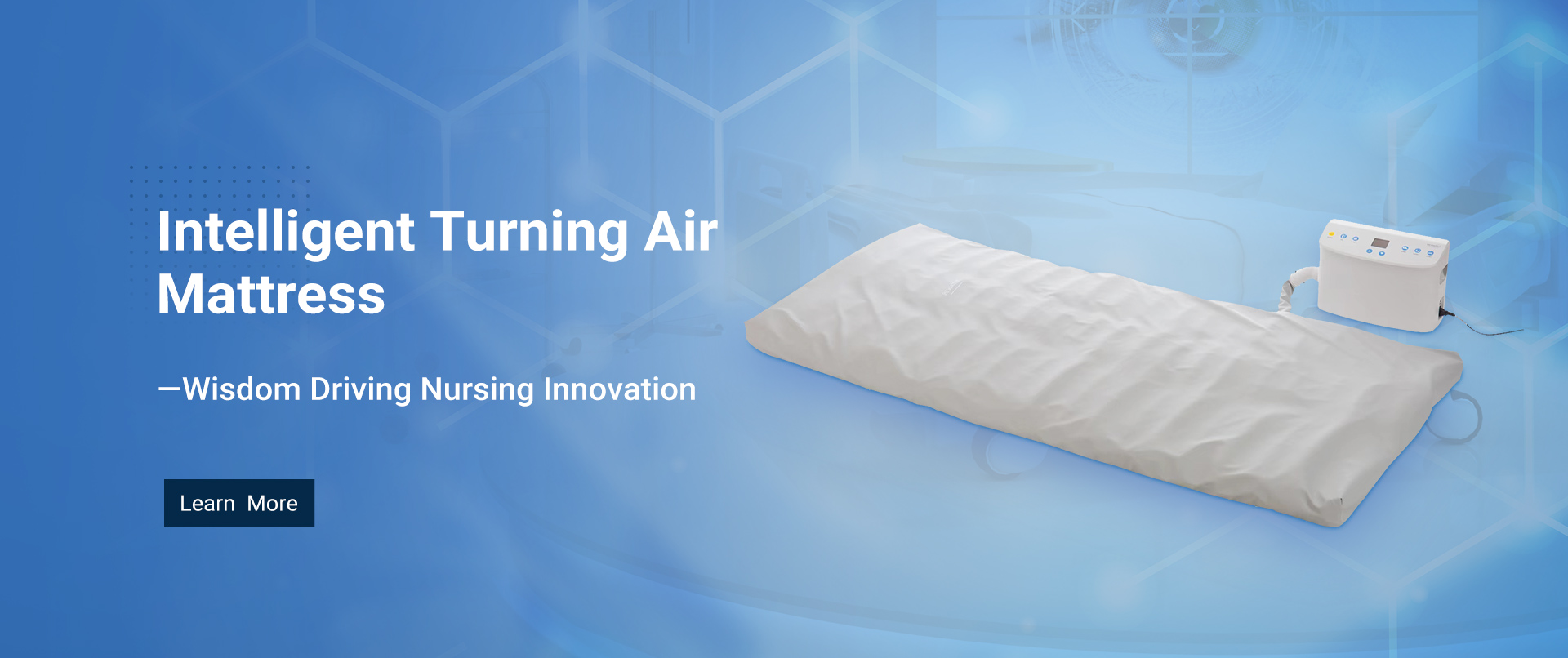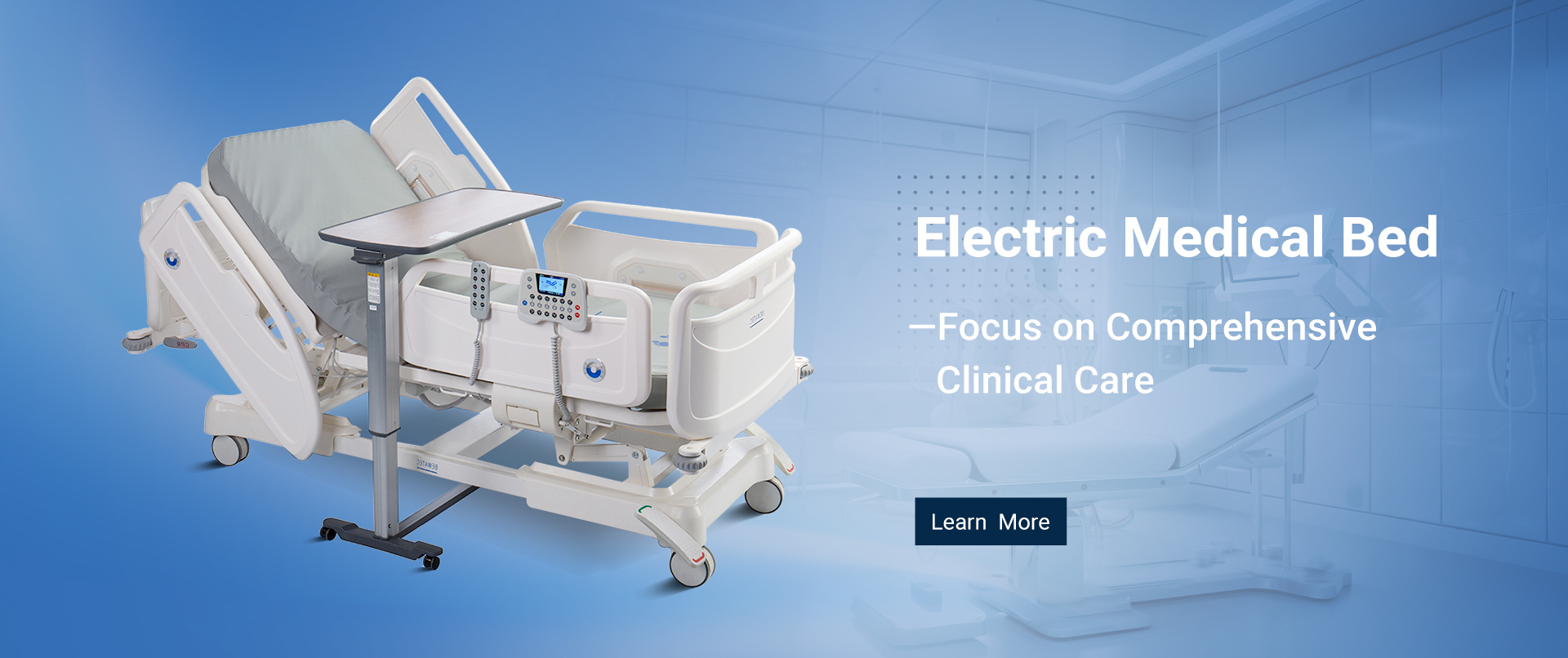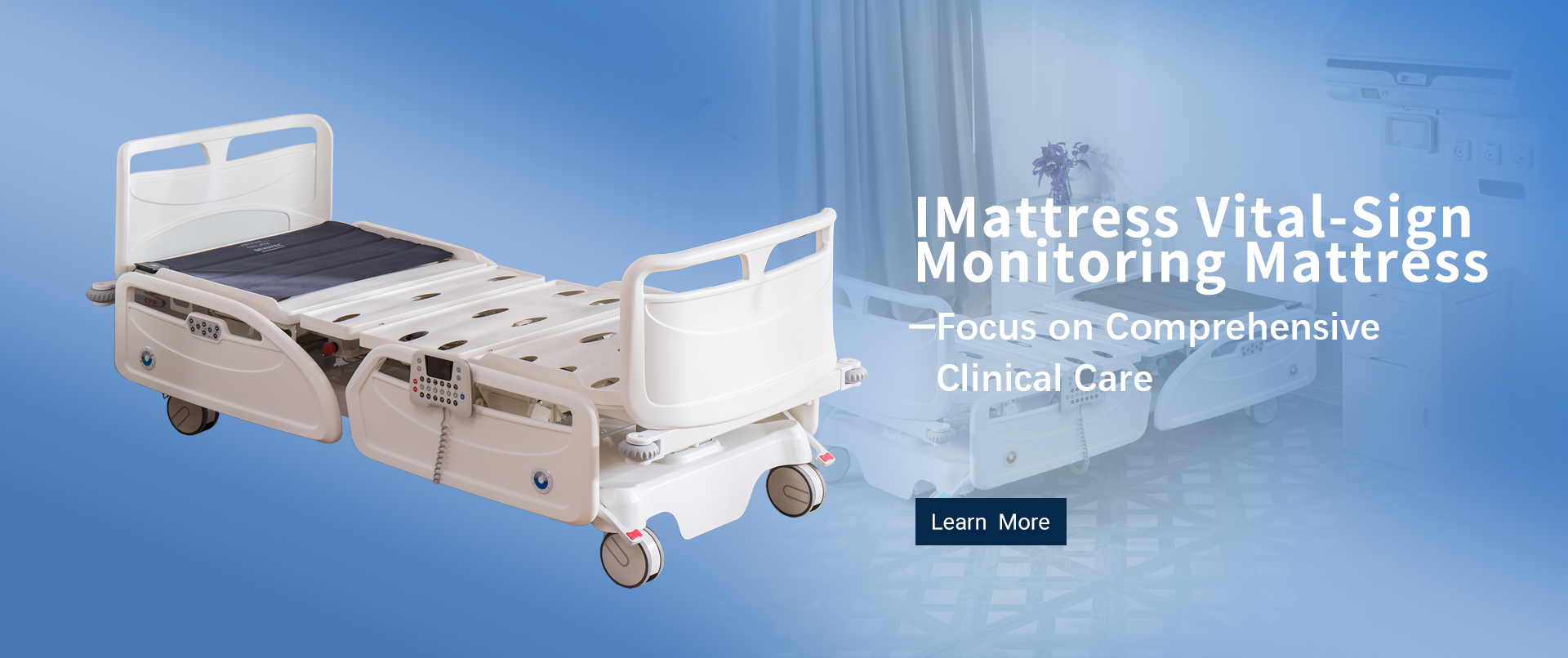
Revolutionizing Healthcare: The Future of Medical Equipment in Patient Care
Table of Contents
- The Role of Advanced Technology in Enhancing Patient Outcomes
- Innovative Medical Devices Transforming Chronic Disease Management
- Telemedicine Equipment: Expanding Access to Quality Care
- Personalized Medicine and the Future of Medical Technologies
- Integrating Artificial Intelligence in Diagnostic Equipment
- Sustainable Medical Equipment: Balancing Innovation with Environmental Impact
- Innovative Solutions for Patient Care: A Deep Dive into the Aceso Series A5 Electric Medical Bed
- FAQS
- Conclusion
- Related Posts
In a time when technology is really changing just about everything in our lives, the healthcare world is actually on the cusp of something huge — especially when it comes to medical equipment. Bewatec (Zhejiang) Medical Device Co., Ltd. is right there leading the charge, focusing on smart medical solutions that make patient care not just more effective, but also more personable. As we look ahead to what’s coming in medical equipment for patient care, it’s clear that these advanced devices and clever digital systems are doing more than just speeding things up. They're actually making care more personal and tailored to each individual. By putting patient comfort, safety, and personalized digital experiences front and center, Bewatec is really committed to pushing forward the digital revolution in healthcare and becoming a leader in smart medical care solutions. This journey will show us how future tech in medical equipment will totally change the way we deliver and think about healthcare — ultimately leading to better outcomes for patients everywhere.

The Role of Advanced Technology in Enhancing Patient Outcomes
You know, the way advanced tech is being integrated into medical equipment really is changing the game for patient care. I read a report from the International Federation of Medical and Biological Engineering back in 2022—crazy how much smarter medical devices have become! They say these smart devices have boosted patient monitoring efficiency by as much as 40%. That really drives home how important it is for hospitals to get on board with tech like AI and IoT. When they do, they can analyze data in real-time and create more personalized treatment plans, which is pretty awesome.
And it doesn’t stop there. Another study from the Healthcare Information Management Systems Society pointed out that hospitals using cutting-edge imaging tools—stuff like 3D printing and augmented reality—have actually cut surgical errors by about 30%. Not only does this make surgeries safer and faster, but it also helps with better planning before going into the OR. That means patients tend to recover quicker and walk out happier. As healthcare keeps evolving, focusing on integrating these kinds of technologies is really key to providing better outcomes and just making patient care better overall. It’s pretty exciting to see where all this is heading!
Innovative Medical Devices Transforming Chronic Disease Management
You know, the world of managing chronic diseases is really changing fast these days. Thanks to some pretty cool new medical devices, both patients and their doctors are getting a lot more empowered. Wearables like smartwatches and glucose monitors are now becoming regular parts of everyday health tracking—they're actually crucial tools for keeping an eye on vital signs right as they happen. And it’s not just about watching stats; these gadgets can also catch issues early on, which can make a huge difference in health outcomes. They give continuous updates on things like heart rate, blood sugar, and even breathing, so treatment plans can be more personalized and effective.
On top of that, telehealth stuff and connected medical devices are making it way easier for folks with chronic conditions to get care. Remote monitoring tools let healthcare teams check in on patients without them having to come into the clinic all the time. That’s a big relief—patients can stay on top of their health while relaxing at home. And with AI thrown into the mix, these devices can do some pretty amazing things like predicting potential health crises before they even happen, completely changing the game for chronic disease management.
Revolutionizing Healthcare: The Future of Medical Equipment in Patient Care
| Device Name | Category | Functionality | Target Users | Benefits |
|---|---|---|---|---|
| Wearable Heart Monitors | Monitoring Devices | Real-time heart rate tracking | Patients with heart conditions | Early detection of anomalies |
| Smart Insulin Pens | Diabetes Management | Tracks insulin doses | Diabetics | Improves dosing accuracy |
| Telehealth Platforms | E-Health Services | Remote medical consultations | Patients in remote areas | Increases access to care |
| Portable Ultrasound Devices | Diagnostic Equipment | Quick imaging in various settings | Emergency responders and clinics | Immediate diagnostic capabilities |
| Remote Patient Monitoring Systems | Monitoring Solutions | Tracks vital signs | Chronic disease patients | Continuous health data collection |
Telemedicine Equipment: Expanding Access to Quality Care
Telemedicine gear is really making a difference when it comes to getting better healthcare to folks who might not have easy access, especially those living in rural or underserved areas. I came across this report from 2022 — the Global Telemedicine Market Analysis — and it’s pretty wild. They’re actually predicting that by 2030, the market will hit about 460 billion dollars, growing at a rate of nearly 38% annually since 2022. A big reason for this boom? People wanting remote ways to keep an eye on their health.
For example, there are these devices that connect via broadband, letting patients send their vital signs in real-time — so doctors can jump in quickly if something’s off. It’s pretty amazing how much easier that makes managing chronic conditions. Plus, telemedicine definitely helps out folks with mobility issues or those who just can’t make it to the doctor’s office easily. The American Telemedicine Association says around 70% of outpatient visits could actually be handled remotely these days, reducing all those trips to the clinic.
With high-quality video calls, portable diagnostic tools, and mobile health apps, we’re really seeing a massive leap in patient care. As the tech keeps evolving, it’s clear that embracing telemedicine isn’t just about better health outcomes — it’s also making our healthcare system more sustainable in the long run.
Personalized Medicine and the Future of Medical Technologies
In the world of healthcare, the future is really leaning into personalized medicine — you know, tailoring treatment and care to fit each patient's unique needs. As things keep changing and evolving, advances in medical equipment are going to be a game-changer, making diagnosis and treatment way more efficient. This shift toward custom approaches doesn’t just boost patient outcomes; it totally transforms the healthcare experience, turning old-school methods into more dynamic, patient-focused models.

Take Bewatec (Zhejiang) Medical Device Co., Ltd., for example — they’re really leading the charge in this shift. They’re developing smart medical solutions that seamlessly blend digital tech into every step of patient care. By harnessing cutting-edge equipment and data analysis, Bewatec is all about making sure patients get care that’s comfortable, safe, and tailored just for them. Their proactive approach has made them a major player on the global stage, helping to push healthcare forward, making it smarter and more personalized everywhere around the world.
Integrating Artificial Intelligence in Diagnostic Equipment
The integration of AI into diagnostic tools is truly set to shake up healthcare as we know it. It’s pretty exciting because it means better accuracy and faster results when it comes to patient care. You see, AI algorithms can sift through enormous amounts of medical data way quicker than any human could, spotting patterns and anomalies with a level of precision that can really catch issues earlier and more reliably. For example, AI-powered imaging systems are now capable of spotting tumors in scans that a radiologist might actually miss, which is a huge step forward in cancer detection.
**One thing to keep in mind:** When hospitals and clinics start using AI tech, it's super important to train the staff properly. They need to understand how to interpret the results that AI gives them—this way, they can make the most out of these new tools.
On top of that, bringing AI into diagnostics can help smooth out busy workflow processes. That means doctors and nurses can spend more quality time with their patients instead of drowning in paperwork. Plus, it helps make care a bit more personalized—patients get quicker, more accurate decisions about their treatment because the data analysis is spot-on.
**And another tip:** Regular check-ups, updates, and maintenance of these AI systems are key. Setting up a solid support system ensures that your diagnostic tech keeps up with the latest advancements, which ultimately leads to better patient outcomes, no doubt about it.

Sustainable Medical Equipment: Balancing Innovation with Environmental Impact
Hey, have you noticed how the world of medical equipment is really changing lately? There’s a big push right now to make manufacturing and design more sustainable—it's like everyone’s realizing we can't ignore the environment anymore. The industry is starting to see that going green isn’t just good for the planet, but it can actually lead to better, longer-lasting medical devices. Plus, research keeps pointing out that thinking eco-friendly can help cut down the carbon footprint and improve overall device lifespan. The WHO even mentioned that climate change is going to have a bigger impact on our health down the line, which just shows how closely tied environmental health and patient care really are.
For those of us in the MedTech world, jumping on the circular economy bandwagon is pretty much essential. By designing in ways that make recycling and resource use more efficient, companies can come up with fresh ideas that reduce waste and lessen environmental damage. For example, there's some interesting research looking into ways to improve how healthcare plastics can be part of a circular system—trying to tackle the crazy amount of plastic waste from medical devices. Take Bewatec (Zhejiang) Medical Device Co., Ltd., for example—they’re really walking the talk by focusing on custom digital care stuff while also pushing for more sustainable manufacturing processes in their products. Honestly, when you think about it, our planet's health and our health are so connected—that the future of medical tech has to combine innovation with real environmental responsibility. It’s all about making medicine better without screwing up the planet in the process.
Innovative Solutions for Patient Care: A Deep Dive into the Aceso Series A5 Electric Medical Bed
The Aceso Series A5 Electric Medical Bed stands at the forefront of patient care innovation, merging state-of-the-art technology with exceptional design to meet the diverse needs of patients in intensive care. This smart bed embodies a commitment to providing an all-encompassing healthcare experience, from initial emergency treatment through to rehabilitation. Its advanced features facilitate ease of use for medical professionals while ensuring maximum comfort and safety for patients.
Designed with both functionality and patient well-being in mind, the Aceso Series A5 incorporates various adjustments that allow for optimal positioning and support. This adaptability reduces the risk of pressure sores and promotes better circulation, essential for patients recovering from serious conditions. Furthermore, its intuitive interface ensures that healthcare providers can swiftly customize the bed settings to cater to individual patient needs, thus enhancing the overall quality of care delivered in critical environments.
The unique design of the Aceso A5 does not merely focus on medical functionality; it also aims to create a more comforting atmosphere for patients during their recovery journey. By integrating thoughtful elements that consider the psychological aspects of healing, the Aceso A5 is not just a piece of equipment—it is a pivotal tool in the modern healthcare landscape that seeks to transform patient care into a holistic experience.
FAQS
: The adoption of smart medical devices has improved patient monitoring efficiency by up to 40%, according to a 2022 report by the International Federation of Medical and Biological Engineering.
Hospitals utilizing advanced imaging technologies, such as 3D printing and augmented reality, have seen a 30% reduction in surgical errors.
AI algorithms can analyze large amounts of medical data much faster than humans, improving the accuracy and speed of diagnoses, such as detecting tumors in radiological images.
Healthcare facilities should focus on training medical staff to interpret AI-generated results to maximize the benefits of advanced diagnostic tools.
Regular updates and maintenance of the equipment are essential to ensure that diagnostic technologies stay current with the latest advancements.
A shift towards sustainable practices in manufacturing helps reduce the carbon footprint of medical devices and enhances their lifecycle, benefiting both human and environmental health.
The World Health Organization indicates that climate change will increasingly affect health outcomes, highlighting the connection between ecological sustainability and patient care.
By adopting eco-design principles that encourage recycling and resource efficiency, companies in the MedTech sector can develop innovative solutions that minimize waste and lower environmental impacts.
Advancing circular economies in healthcare plastics addresses the pressing challenge of plastic waste generated by medical devices, promoting more sustainable practices.
Bewatec is focused on providing personalized digital care solutions while actively promoting sustainable manufacturing processes in its product development.
Conclusion
Looking ahead, the future of medical equipment is really set to shake things up when it comes to patient care, thanks to some pretty exciting tech and innovative solutions. A big focus is on improving patient outcomes with cutting-edge devices that are changing the game for chronic disease management. Plus, telemedicine is making it easier than ever for folks to access quality care from just about anywhere. Personalization is also a huge trend — healthcare is becoming more tailored to each individual, thanks to the latest medical tech. And let’s not forget AI — it’s really boosting the accuracy and speed of diagnostics, making healthcare more efficient overall.
Companies like Bewatec (Zhejiang) Medical Device Co., Ltd. are leading the charge in digital healthcare transformation. But it’s not just about innovation; sustainability is just as important. Finding that sweet spot between pushing forward with new technology and keeping an eye on the environment is key. We want patient care to be not only safe, comfortable, and personalized but also mindful of our planet’s future. All in all, the evolution of medical equipment isn’t just improving how we care for patients — it's actually shaping the whole healthcare industry, making it more advanced and accessible than ever before.
Related Posts
-

Understanding the Different Types of Hospital Medical Equipment
-

How to Choose the Right Electric Medical Bed for Your Needs
-

How to Analyze the Demand for Hospital Beds from China Manufacturers in 2023
-

10 Amazing Tips to Harness Innovative Out-Of-Bed Detection Technology
-

Revolutionizing Patient Care with Air Mattress Innovations at China's 138th Canton Fair 2025
-

Ultimate Guide to Finding the Best Hospital Equipment Online for Global Buyers
Blog Tags:









